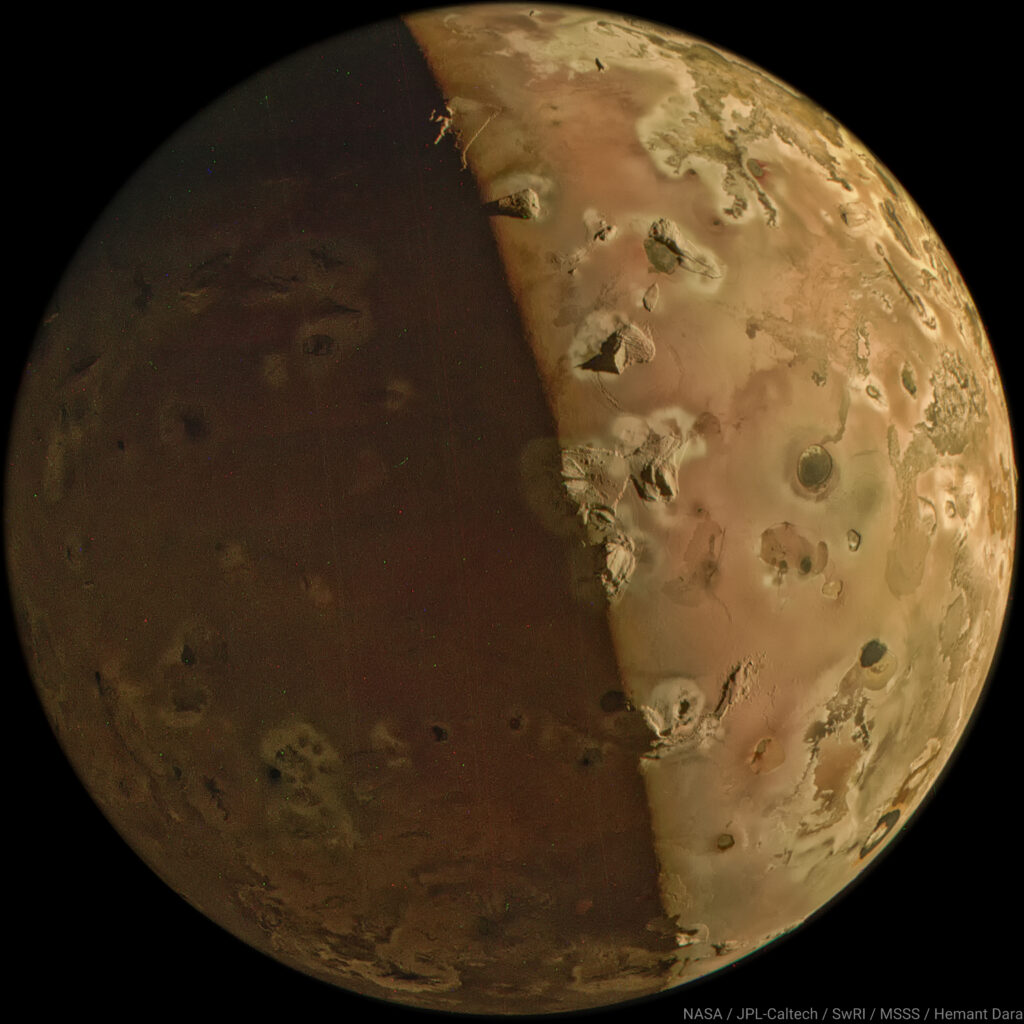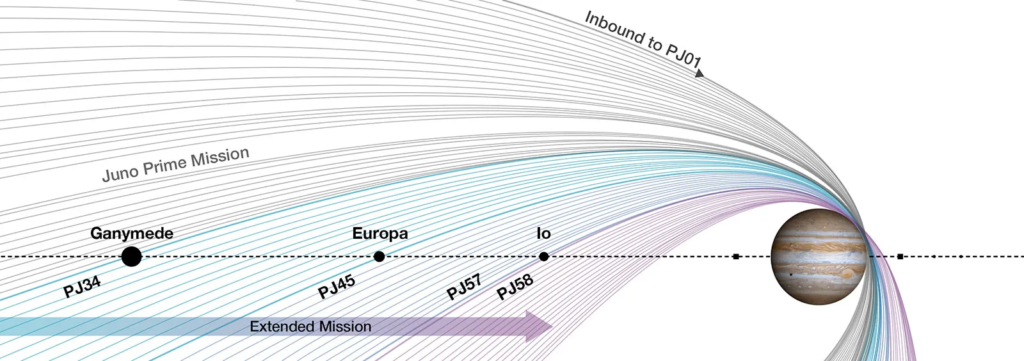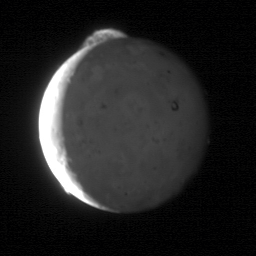
Juno image of Io on February 4, 2024. Source: NASA/SwRI/MSSS
NASA's Juno space probe recently bid farewell to Io, the most active moon in the solar system. The flyby, which took place on February 3, 2024, was the last in a series of flybys of some of Jupiter's natural satellites carried out by the probe as part of its extended mission. Juno was launched in 2011 and entered Jupiter's orbit in 2016. Its primary mission was to study the internal structure and atmosphere of the gas giant. Subsequently, NASA extended the mission to allow the study of Ganymede, Europa, and Io through close flybys.
These flights allowed the probe to collect invaluable data on these icy moons, which are small worlds in their own right, each with unique and interesting physical and geological properties. This month's flyby of Io was the last in the series. Previous flights were on June 7, 2021, 1,053 km from the surface of Ganymede, on September 29, 2022, 355 km from Europa's icy crust, and on December 30, 2023, 1,498 km from the raging surface of Io. The most recent one was also on Io, and occurred at an altitude of 1,497 km, and is therefore technically the closest.

Io's two recent flybys are important because they represent a unique opportunity to see surface changes in the short term, just one month apart. This moon is actually characterized by very intense volcanic activity, as there are more than 400 active volcanoes. It is actually the most active surfaced satellite in the solar system, with lava sprays reaching tens of kilometers above sea level. It is also Jupiter's innermost Medici satellite, completely immersed in Jupiter's powerful magnetosphere: it is no coincidence that magnetic and volcanic activity on Io are so closely linked. Adverse conditions limit space exploration, making these short passages important observational opportunities.
The Juno mission was an extraordinary success. The probe collected invaluable data about Jupiter and its moons, which helped improve our understanding of these worlds. The end of the mission is near, and next year the probe will complete its extended science mission and then plunge into Jupiter's atmosphere and destroy itself. Technically, there will be another opportunity to observe Io before the mission ends, but the passes will be 20,000 to 80,000 kilometers away, which isn't too much to pick up some information, but not too little to examine surface details.
In the past, only the Galileo probe was able to get close to Io, passing within 102 kilometers of the surface, but it was not designed to withstand such extreme conditions and many images were lost. Previously, Voyager 1 was able to capture an image with clear surface details. The only video of Io, so to speak, was captured in 2007 by the New Horizons spacecraft, as it was traveling in the direction of Pluto. The video consists of only five frames and clearly shows a volcano spewing Tvashtar PatraiA tail of dust reaches a height of 330 kilometers.

Upcoming missions juice H Europe Clipper They will continue to explore Jupiter and its moons, but they will not go inside to observe Io. “Joyce” is an ESA mission that will primarily explore Ganymede, while “Europa Clipper” is a NASA mission that will explore Europa. These missions will help us learn more about these icy moons, their composition and geology, and their potential to host life.

“Internet trailblazer. Travelaholic. Passionate social media evangelist. Tv advocate.”
